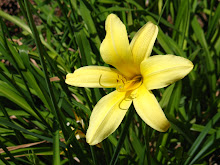Map of Aquitaine
Eleanor of Aquitaine was born in 1122 to Aenor of Chatellerault and William X of Aquitaine. “In July 1137, just a few months after the death of her father, Eleanor of Aquitaine married Louis [VII, both of them teenagers,] heir to the throne of France. He became the king of France when his father died less than a month later.” (source)
“As Queen, Eleanor was famous for her beauty and wit. During their 15-year marriage she bore Louis two daughters and exercised considerable influence over her mild husband. In 1147 she coaxed him into undertaking a Crusade.” (source) Her grandfather had fought in the first Crusade, and she was determined to be a part of the second one. “At age 19, she knelt in the cathedral of Vézelay before the celebrated Abbé Bernard of Clairvaux offering him thousands of her vassals for the Second Crusade. It was said that Queen Eleanor appeared at Vézelay dressed like an Amazon galloping through the crowds on a white horse, urging them to join the crusades. While the church may have been pleased to receive her thousand fighting vassals, they were less happy when they learned that Eleanor, attended by 300 of her ladies, also planned to go to help ‘tend the wounded.’” Commentators throughout her adventure criticized the presence of Eleanor, her ladies and wagons of female servants. The women never fought, but they were dressed in armor and carrying lances. (book source, source, Millard 102.)
In Antioch, Eleanor caused a scandal by paying more attention to her handsome and interesting Uncle Raymond than to her husband. She asked for her marriage to be annulled on the terms that they were so closely related that the marriage was prohibited by the Church. Louis VII was furious and made her ride with him to Jerusalem even though she wanted to stay back with Raymond. However, his expedition failed and the couple rode in separate ships back to France. On the way home while resting in Sicily, she was brought the news that Raymond had been killed in battle. In 1152, her request for divorce was granted and she remarried eight weeks later. This time “Eleanor married Henry, duke of Normandy and count of Anjou, uniting her vast possessions with those of her husband. Louis VII feared this powerful combination, and when Henry ascended the English throne in 1154, the stage was set for a long struggle between the English and French kings.” (source) (source, source)
“For the next thirteen years Eleanor constantly bore Henry children, five sons and three daughters… However, all was not well between Henry and Eleanor. When her older sons were of age, her estrangement from her husband grew. In 1173 she led three of her sons in a rebellion against Henry, surprising him with this act of aggression so seemingly unusual for a woman. In her eyes it was justified… Eleanor may have hoped that her prize would have been the right to rule Aquitaine with her beloved third son Richard, and without Henry. The rebellion was put down, however, and fifty-year-old Eleanor was imprisoned by Henry in various fortified buildings for the next fifteen years.” (source)
An interesting twist in her life occurred when Henry died in 1189. “On the accession of her son Richard I to kingship, Eleanor's fortunes rose again. When Richard was fighting…she repeatedly intervened to defend his lands - even against her son John… Her relentless work on behalf of her favorite son increased her fame as an extremely able politician.” (source) “When her son John joined forces with the King of France in rising against his brother King Richard, Eleanor backed Richard and helped bolster his rule when he was on crusade. In 1199 she supported John's claim to the throne against her grandson Arthur of Brittany (Geoffrey's son). Eleanor was 80 years old when she helped hold out against Geoffrey's forces until John could arrive, defeating Arthur and his supporters. In 1204, John lost Normandy, but Eleanor's European holdings remained secure.” (source)
“Eleanor died in 1204 at her favorite religious house, the abbey of Fontevrault, where she had retreated to find peace during various moments of her life.” (source) She lived a life of 82 years that changed history forever. Eleanor of Aquitaine is definitely a very interesting character to study.
Works Cited
Link to video at the end of the 2nd paragraph labeled "book source"
Millard, Dr. Anne and Patricia Vanags. The Usborne Book of World History. London, England: Usborne Publishing Ltd. 1985.
